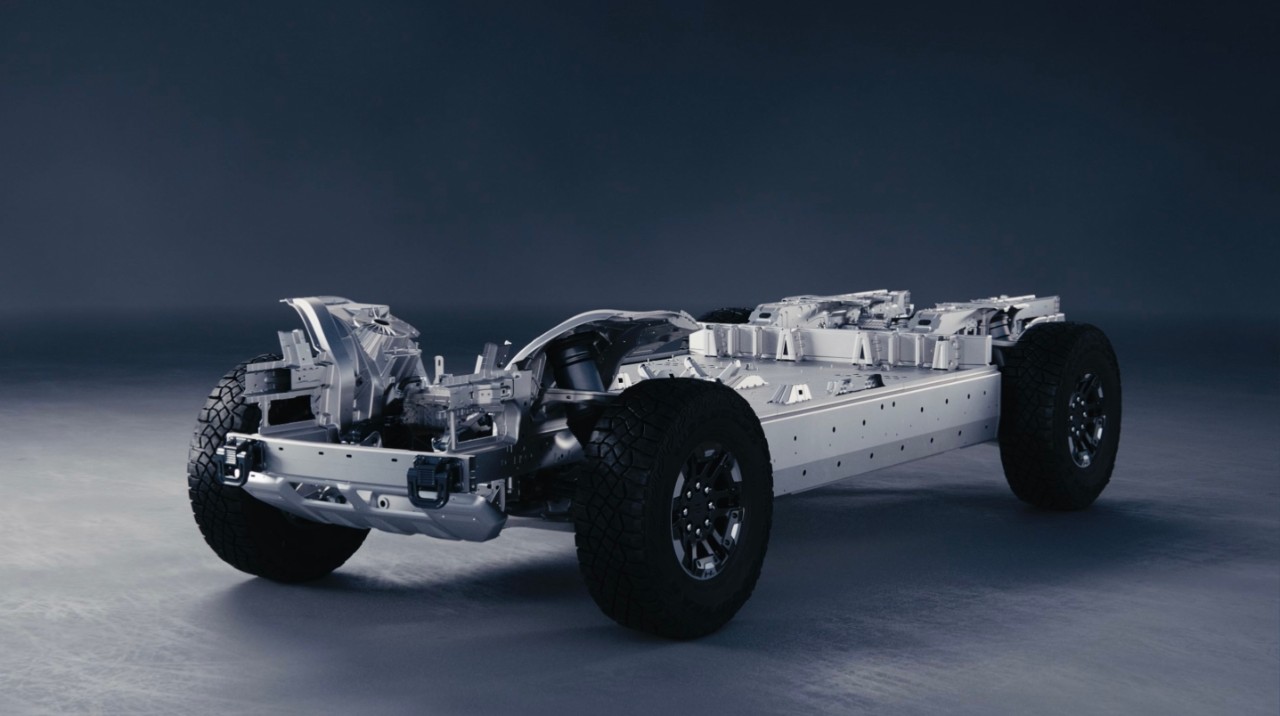

Solid state batteries, or SSBs, have been the holy grail for EVs for the past several years. Sometimes whispered about in the way one might regard a legend or ghost story, the longer-range, faster-charging promise of SSBs has seemed to be just out of reach.
That status may be shifting. Several automotive manufacturers like BMW and Ford have invested in battery maker Solid Power, which was established in 2011 and claims its SSBs will be safer, offer higher energy and cost less than lithium-ion batteries. Ford’s F-150 Lightning’s chief engineer Linda Zhang says the company is not using SSBs right now but they’re “definitely something we’re looking at.”
With the wild popularity of the Lightning right now, the Blue Oval is doing everything it can to keep up with demand as is. However, implementing another new element into the vehicle can’t be a far behind plan.
So, how does a solid state battery work?
GMC’s new Hummer EV is a gigantic machine in frame alone, and the 24 stacked battery cells on the Ultium platform adds nearly 3,000 pounds to this heavyweight. The Hummer EVs power comes from a proprietary NCMA combination (nickel, cobalt, manganese, and aluminum) packed into a lithium-ion cell technology much like the battery in your smartphone.
Commonly used EV batteries are comprised of a cathode, anode, separator, and liquid electrolyte. While driving, positively charged lithium-ions inside the battery are attracted to the cathode and electrons zip through the high-voltage circuits. A solid-state battery, on the other hand, uses solid electrolyte in place of the liquid.
Why does that matter? Not only is the solid state battery lighter and denser, and able to pack more power into a smaller footprint, it’s also studier. Imagine a waterbed and a typical mattress. If an object forcibly falls onto a waterbed, the risk of leakage (and flooding the room where it sits) is high. A solid mattress can withstand more damage without ruin. Current Li-ion batteries are prone to swelling caused by temperature changes and can certainly leak in a crash. Solid state batteries are known to be less prone to fires and more stable for features like quick charging.
Current lithium ion batteries versus solid states
Solid state batteries will offer more than just expanded range and increased stability. Many EVs today use a familiar “skateboard-type” architecture (an expansive sheet of lithium-ion battery packs placed neatly below the cabin floor between either axle), AutoPacific analyst Robby DeGraff tells PopSci. Moving to smaller, more-efficient SSBs affects the construction of the whole vehicle.
“Shifting to solid-state batteries could mean we’ll see new possibilities of further maximizing interior space and a bit more flexibility when it comes to drafting an EV’s overall shape itself,” DeGraff says. “When solid-state batteries are ready for primetime use, I think that’s going to be a turning point in the ongoing migration towards EVs. Solid-state batteries will likely address one of the biggest hesitations consumers may have committing to going all-electric: range anxiety.”
SSBs charge quicker too, which is another roadblock in the adoption of EVs. For automakers, these batteries have the potential to open up new doors when it comes to designing an EV, as solid-state battery packs are much more packable, compact, and safe.
According to Brussels-based group European Federation for Transport and Environment, SSBs also have the potential to reduce the carbon footprint of EV batteries by up to 39 percent compared with liquid lithium-ion batteries. The Federation says that although making solid state batteries would use up to 35 percent more lithium than the current lithium-ion technology, it would also need less graphite and cobalt.
What’s taking so long?
The promise of SSBs sounds tantalizingly good. However, it’s important to note that the technology isn’t fully developed and has not been tested yet, so there is going to be a bit of a wait. Chris Martin, who heads up advanced technology communications for Honda, tells PopSci the development of materials optimal for a solid state battery is quite challenging, as is establishing an efficient production process.
“In chemical products, like batteries, it is often much easier to make small battery sizes in small numbers in a lab; mass production of larger products is much more difficult,” Martin explains. “Honda began the process of developing all solid state battery technology nearly 10 years ago, and we anticipate that it will still take more time to achieve mass production at Honda’s exacting quality standard.”
Martin says Honda is making progress and will invest approximately 43 billion yen (nearly $300 million USD) to establish a pilot production line in Tochigi, Japan to produce solid-state batteries, aiming to introduce EVs with all solid state batteries into the market in the second half of this decade.